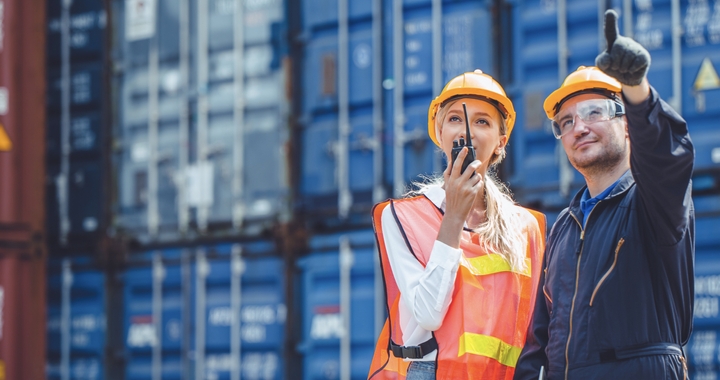Who is a Shipper, Consignee, Carrier and Notify Party?

The shipping process can be very complex and overwhelming, especially for first-time importers and exporters. Part of its complexities is caused by the numerous terms and concepts that are used that may not be familiar to those outside of the industry. There are various terminologies used to describe certain aspects of the shipping process, as well as the multitude of different parties involved.
Some of the common terms that new importers and exporters often hear include “shipper”, “consignee”, and “notify party.” Often, these are construed and confused as one and the same. However, they are completely different people who play different roles throughout the shipping process. While their identities and responsibilities may overlap at times, knowing how to set them apart is vital to a successful shipping experience.
Getting familiar with the different parties, their responsibilities, and roles in import and export can help you better understand the shipping process and how you can go about it seamlessly. In this article, we talk about shippers, consignees, and notify parties, what they do, and what part they play in international shipping.
Who is the Shipper?

The shipper is also known as the exporter. Often, it is from them that the goods originate, which is why they can be referred to as the seller. The shipper is the natural or legal individual, company, or organization that makes a sale to a consignee or buyer in a foreign country.
However, it’s important to note that the seller is not always the shipper. The goods can come from another party or individual and are turned over to the seller for shipment or delivery purposes.
In some cases, the buyer can also be the shipper, if the Incoterms used for the shipment dictate that the buyer is responsible for carrying out a contract of carriage. This is the case in the EXW or ExWorks Incoterm, where the buyer picks up the goods at the seller’s premises and arranges both inland transport and international shipping.
Whoever in your unique situation is deemed the shipper, they are responsible for the first leg of the shipping process. The shipper checks, packs, marks, and prepares the goods for delivery. Depending on the Incoterm used for the shipment and the terms of the contract of carriage, the shipper may also be responsible for other things involved in the process, including:
- Obtaining the proper licenses for export and import
- Carrying out the requirements needed for customs clearance at the origin port or destination port.
- Contracting carriage for the delivery of the goods
From their roles and responsibilities with regards to the shipping process, the shipper wears two hats, depending on their roles in the sale contract and the contract of carriage.
Who is the Consignor?
The consignor is the party who sends the goods in a shipment. This may be the owner of the goods, or it may be a third-party shipper who has been contracted by the owner to handle the shipping process. In either case, the consignor is responsible for ensuring that the goods are properly packaged and labeled for shipment and that all necessary shipping documents are completed accurately.
The consignor is also responsible for providing any required special instructions to the carrier regarding handling the shipment. For example, if the goods are particularly fragile or valuable, the consignor may request that the carrier take special care in loading and transporting them. Failure to properly notify the carrier of such instructions could result in the consignor being liable for any damage to the shipment.
Who is the Consignee?

The term “consignee” and “shipper” are often used interchangeably. However, there are key differences between the two parties. In contrast with the roles of the shipper, the consignee is not the sender, but the receiver of the goods. Usually, the consignee is the owner or buyer who purchases the goods from the seller. The consignee is the person to whom the shipper must deliver the goods.
Consignees can be private individuals or companies. While most of the time, they are the exact buyers or owners of the goods, named consignees can also be the agent of the owner or buyer, an employee, or a bank. Whoever is named the consignee is indicated in the Bill of Lading, which is a document that is required for customs clearance in international transactions.
As we mentioned, the consignee is not always the buyer of the goods but can be most of the time. The term “consignee” is used in the contract of the carriage while the term “buyer” is used in the sales contract.
Depending on the customs clearance rules of the destination country and the movement type selected by the parties to the shipment, the consignee is often legally required to be physically present to collect the shipment at the port of destination or the container freight station.
Who is the Notify Party?

The notify party is listed in the documents as the person to contact or notify when the shipment arrives at the destination port or airport. The notify party can be anyone, from the buyer, the consignee, a shipping agent, an interested party, or other individuals named in the documents. Usually, naming a notify party is required only if the person is different from the consignee. Otherwise, the consignee is the person notified of the shipment’s arrival.
Further, there can be more than one notify party, but there is usually only one primary party who notifies all other interested parties when the cargo or vessel has arrived.
In most cases, the notify party is also the person in charge of arranging the documents and requirements for customs clearance at the destination. They take charge of the formalities involved in the arrival of the vessel and the goods delivered.
Despite a notify party being named in the documents and playing the role of being updated when the shipment arrives, carriers or shippers don’t always fulfill this responsibility. Sometimes, the notify party is not given any updates on the goods or the vessel carrying them.
Generally, the shipper or carrier is responsible for providing the arrival details to the notify party. But some bill of lading documents have clauses that absolve the shipper or carrier from responsibility or liability in case of failure to give notice. Consignees or buyers should be vigilant and request the details to ensure the smooth collection of the goods from the destination port.
These three parties involved in the shipping process do overlap in roles and responsibilities, as well as identities, in many ways. However, there are still key differences between them that are helpful to know and understand. Their roles can differ depending on the terms of the sales contract, the contract of carriage, as well as the Incoterms used in the shipment.
A reliable freight forwarder can help you navigate your shipping process, arrange the transport of your goods on your behalf, and interact with the parties involved in the shipment. Freight forwarding services can eliminate the complexities and make the shipping process more hassle and stress-free for shippers, sellers, and buyers.


